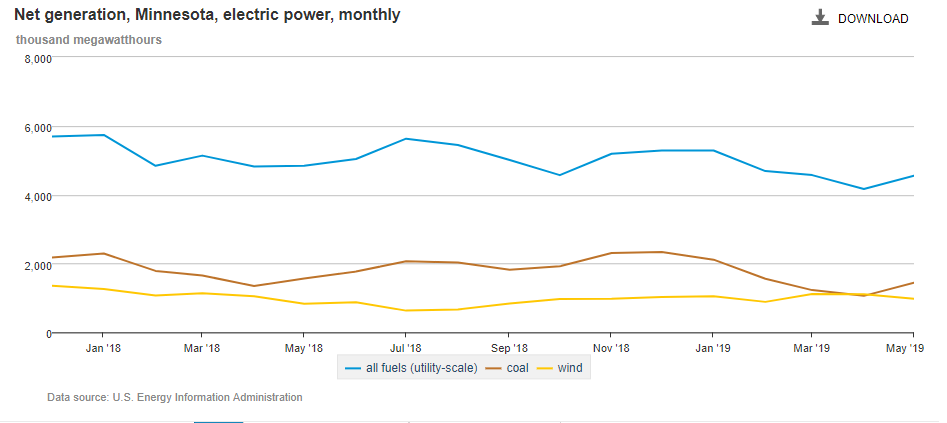Minnesota Wind Generated More Electricity Than Coal in April 2019, But That’s Not Really Relevant
Renewable energy advocates in Minnesota will probably celebrate the fact that wind power produced more electricity than coal-fired power plants in April of this year (if they haven’t already). This is true, as you can see in the graph below, but it is also irrelevant.

When this phenomenon is viewed in the context of electricity demand, as well as supply, it paints a very different picture. The graph below shows total electricity generation in Minnesota, along with the generation from coal and wind, dating back to January of 2018.

Coal generation fell in April of 2018 and 2019 because April is one of the months with the lowest demand for electricity. Because the supply of electricity on the grid must always match the demand, power plant operators reduce the amount of electricity generated by coal plants to allow supply to match demand. The low demand for electricity gives plant operators an opportune time to take the coal plants offline for repairs and maintenance.
In contrast, wind output generally surges in the spring even though the demand from the grid is low. This occurs because the spring is one of the windiest times of the year, and as we all know, wind turbines are only useful when the wind is blowing.
Contrast April with August of this year. I took this screenshot last week (when I prepared this post), and it shows that coal is king in the Midcontinent Independent Systems Operator (MISO) system, with wind operating at 5 percent of its installed capacity and producing less than 2 percent of the electricity in MISO.

Herein lies the rub, coal plants generated less electricity than wind in April of this year, but that’s only because we didn’t need the extra power. We could easily turn the coal plants on if we did need it.
On the other hand, when electricity demand peaks in the summer as we turn on the air conditioning, we turn up the coal plants to make sure there is enough electricity to go around. We can’t do that with the wind, and it just so happens that August is the month where we typically see the least output from our fleet of expensive wind turbines.
Context matters when assessing claims about the relative contributions of different energy sources, so the next time you see someone post about how wind generated more electricity in April than coal, you’ll be able to share this post and show them that these claims are mostly showmanship with little substance.